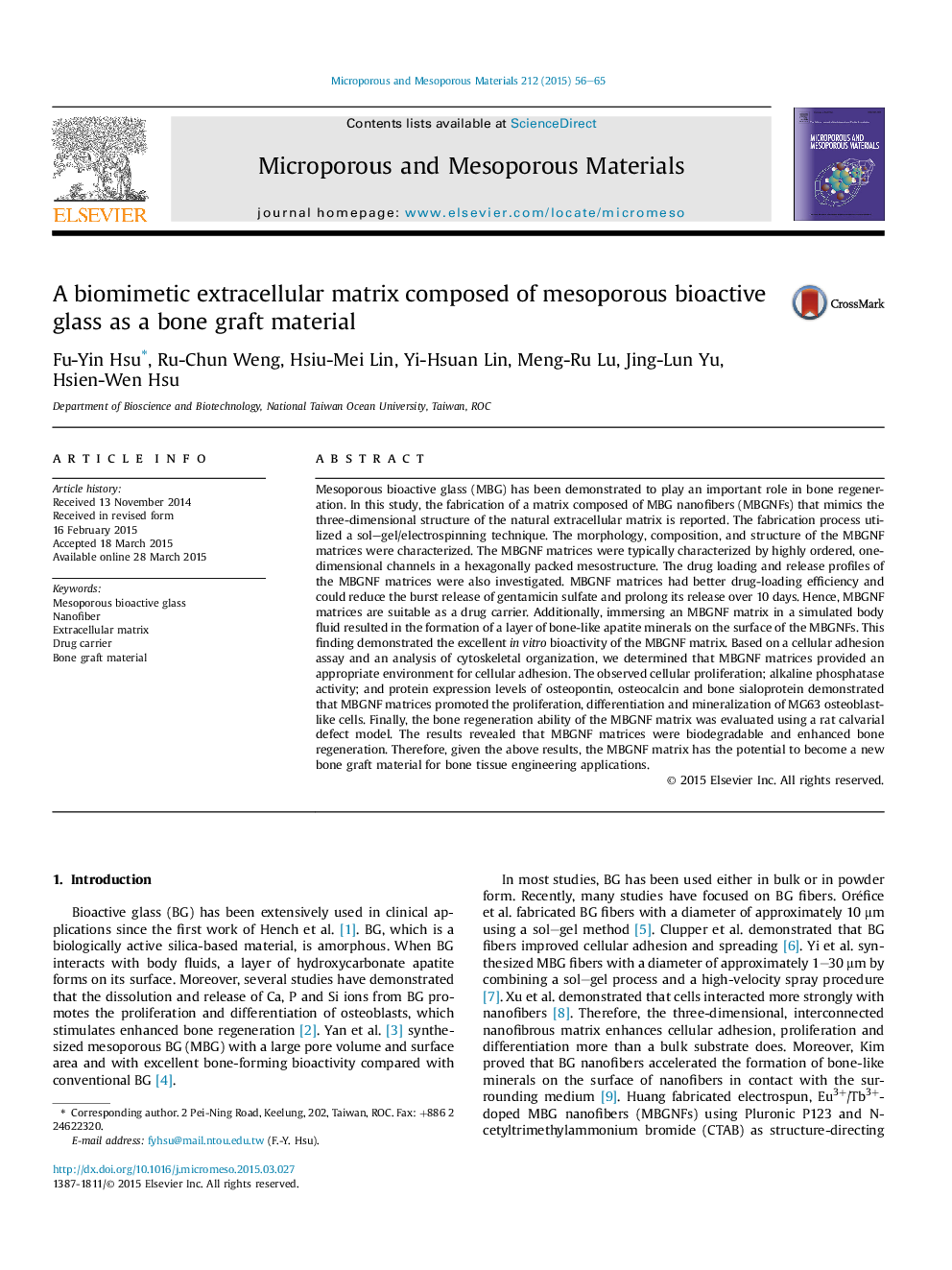| کد مقاله | کد نشریه | سال انتشار | مقاله انگلیسی | نسخه تمام متن |
|---|---|---|---|---|
| 72489 | 49022 | 2015 | 10 صفحه PDF | دانلود رایگان |

• Mesoporous bioactive glass nanofibers (MBGNFs) have an ordered mesopore structure.
• MBGNF matrix shows superior bioactivity.
• MBGNF matrix promotes the differentiation of MG63 osteoblast-like cells.
• MBGNF matrix is biodegradable and enhances bone regeneration.
Mesoporous bioactive glass (MBG) has been demonstrated to play an important role in bone regeneration. In this study, the fabrication of a matrix composed of MBG nanofibers (MBGNFs) that mimics the three-dimensional structure of the natural extracellular matrix is reported. The fabrication process utilized a sol–gel/electrospinning technique. The morphology, composition, and structure of the MBGNF matrices were characterized. The MBGNF matrices were typically characterized by highly ordered, one-dimensional channels in a hexagonally packed mesostructure. The drug loading and release profiles of the MBGNF matrices were also investigated. MBGNF matrices had better drug-loading efficiency and could reduce the burst release of gentamicin sulfate and prolong its release over 10 days. Hence, MBGNF matrices are suitable as a drug carrier. Additionally, immersing an MBGNF matrix in a simulated body fluid resulted in the formation of a layer of bone-like apatite minerals on the surface of the MBGNFs. This finding demonstrated the excellent in vitro bioactivity of the MBGNF matrix. Based on a cellular adhesion assay and an analysis of cytoskeletal organization, we determined that MBGNF matrices provided an appropriate environment for cellular adhesion. The observed cellular proliferation; alkaline phosphatase activity; and protein expression levels of osteopontin, osteocalcin and bone sialoprotein demonstrated that MBGNF matrices promoted the proliferation, differentiation and mineralization of MG63 osteoblast-like cells. Finally, the bone regeneration ability of the MBGNF matrix was evaluated using a rat calvarial defect model. The results revealed that MBGNF matrices were biodegradable and enhanced bone regeneration. Therefore, given the above results, the MBGNF matrix has the potential to become a new bone graft material for bone tissue engineering applications.
Figure optionsDownload as PowerPoint slide
Journal: Microporous and Mesoporous Materials - Volume 212, August 2015, Pages 56–65